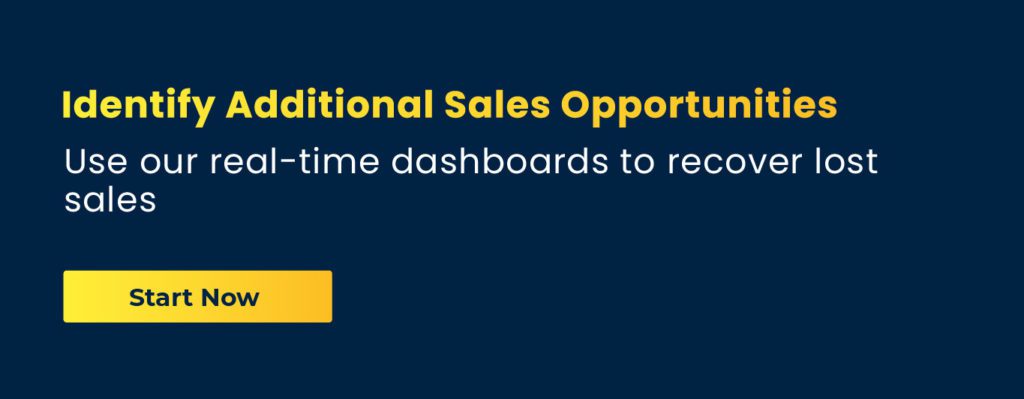The Truth About Sales and Operations Planning

Sales and Operations Planning (S&OP) is a critical business process instrumental to realizing continued growth in any industry.
Yet, despite all the technological advancements that have taken place over the past decade on the manufacturing side, S&OP continues to be dominated by ineffective, dated, manual practices in many organizations.
In addition, inadequate process support and age-old misconceptions don’t help improve either efficiency or accuracy.
A majority of these misconceptions – or myths – exist because people don’t really grasp the goal of holistic, collaborative, data-driven sales and operations planning: to drive continued, increasing long-term profitability.
When the objective in itself is misunderstood or underrated, building an effective process and establishing realistic and meaningful goals in the constant flux of the cement manufacturing space become nearly impossible.
To ensure alignment between business goals and operational plans as well as optimal business performance, it’s essential to get S&OP right. The best way to do that is to bust some annoyingly common myths.
Here are our top nine.
S&OP (Sales and Operations Planning) is a pointless exercise that adds no value to revenue growth or cost savings.
Truth: Sure, S&OP does not solve challenges or drive revenue immediately. As a result, it is easy to regard it as unimportant.
However, when effectively executed, S&OP is one of the few processes that can transform businesses of all sizes – from startups to Fortune 500 companies – and help ensure sustained business growth.
Organizations that have mastered the use of S&OP (Sales and Operations Planning) to inform operations management routinely succeed at achieving their business goals as well as outpacing their competitors.
S&OP is just an analysis of historical data. It does not help you manage real-time changes on the shop floor.
Truth: If your S&OP process simply involves reviews of historical data, it isn’t doing the job that it’s meant to do. Of course, historical data is critical to analyzing past decisions, but it should not be the sole focus of S&OP.
Mature Sales and Operations Planning (S&OP) processes are in fact firmly forward-looking, and aim to leverage past data to predict the future and proactively prepare for it.
Regular near-term projections of this nature can help businesses retain the agility to adapt to rapid market changes, and remain viable and competitive in the long term.
You don’t need fancy S&OP systems; spreadsheets are just as good to do the job.
Truth: It is a widespread belief that spreadsheets are the best tool for S&OP. More importantly, they are cheap and effective – what more could you ask for? Unfortunately, nothing could be further from the truth.
Sure, spreadsheets are great at documenting data, and they can also be helpful when making the case for an S&OP process, but their effectiveness ends there.
They can neither be used for AI-powered analytics, nor can they scale in time with rapid business growth.
Too often, businesses get comfortable with using them and are apprehensive of shifting to a purpose-built S&OP system, yet, that’s exactly what they need to achieve the maturity they need to transition from a reactive to proactive approach to operations.

S&OP simply offers a quantitative view of cement demand and supply – just look at your numbers and you have what you need to support your decisions.
Truth: The qualitative aspects of S&OP are more important than its quantitative aspects.
While the numbers are derived from data about customer demand, supply, pricing, inventory levels, etc. for cement, it is the evaluation of risks and opportunities based on this data – and the prescriptive actions that can be taken to mitigate risks and leverage opportunities – that forms the core value proposition of S&OP.
Companies that have mature Sales and Operations Planning processes leverage purpose-built solutions to capture and evaluate opportunities, risks, and other qualitative information in real time, and analyze this against a backdrop of quantified goals to keep making the most out of given market conditions at any point of time.
By gaining an understanding of how current projections compare with pre-planned business goals, operations managers can take better-informed decisions to optimize company performance for the future.
S&OP is based on a fixed demand plan, it does not reflect how we can shape cement demand to meet business objectives.
Truth: A mature S&OP process determines the optimal business responses to economic changes in demand and supply, and evaluates and recommends demand-shaping strategies that allow cement manufacturers to make the most of these conditions. This helps promote more robust financial modeling for the near term as well as beyond it.
Advanced S&OP tools offer modeling capabilities that help quickly visualize the results of different scenarios, and enable comparisons across scenarios.
Thus, an effective S&OP process also offers cement manufacturers the much-needed agility to evaluate each scenario to identify and analyze their effects on key performance indicators such as cost, revenue, and profit margins.
The insights thus derived can inform the best optimal plan at any given time (an exercise that would be nearly impossible using manual methods such as spreadsheets).

S&OP can be implemented with the flip of a switch. Just configure the software and you’re ready to go.
Truth: A successful S&OP process can at most analyze and recommend optimal strategies/ operations – implementation is an entirely different matter that relies on operational managers to interpret data-based insights to maximize business goals.
Thus, it takes the collaboration of people, processes, and technology to implement successful S&OP (sales and operations planning).
It is also important for S&OP processes to follow a planned cadence to not only ensure that operations stay on track, but also to eliminate bottlenecks before they snowball into major operational holdups.
S&OP is rigid; the business moves rapidly and unpredictably.
Truth: This myth has largely spread due to a misconception that a successful S&OP process should follow a standard 5-step process (product, demand, supply, financial, and executive reviews). In reality, no fixed process can guarantee results for every company or industry. Every company therefore has to tailor its S&OP process to adapt it to its unique business requirements.
The fact that a majority of S&OP processes even today are supported by rigid technologies such as spreadsheets and ERP systems is another reason for widespread belief in this myth.
Effective, successful S&OP is in reality about planning for and managing changes in market conditions and business goals – which is difficult to do if the technology supporting it is itself inflexible.
Mature S&OP should be able to provide you with a “window into the future” to enable you to:
- Predict potential issues
- Take proactive action to prevent the issues from spiraling out of control
In a nutshell, S&OP is about analyzing whether projected supply can meet future demand in a way that satisfies both expected customer service levels and business objectives.
It enables companies to shift away from their usual short-term focus of on-time, in-full deliveries, and toward a near-term, preventive approach of getting ahead of capacity, supply, distribution issues, and cash flow issues with enough time to mitigate them before they happen.
There’s no need for S&OP when you have lean manufacturing.
Truth: True, lean manufacturing helps eliminate waste, enabling inventory to be used just in time to meet customer demand. However, this does not mean that you still don’t need to align supply with demand. One thing about inventory is that it takes time to procure, build, and distribute.
Often, the time that a customer is willing to wait to receive an order (i.e., order lead time) is a lot shorter than the time that it takes to produce the order (production lead time).
This difference in lead times can be solved with shorter-term S&OP. Longer-term S&OP helps ensure that future capacity is available when required to meet projected demand.
It takes time to build production and distribution facilities, and to bring new suppliers and distribution partners online. Lean manufacturing does not help solve short-term lead time mismatch issues and longer-term capacity planning challenges.
Thus, S&OP and lean manufacturing are two entirely different, equally necessary aspects of a high-performance value chain.
S&OP processes are too complex and difficult to manage.
Truth: In today’s aggressively competitive economy, it is only through close collaboration between businesses and their trading partners that supply chains can be truly effective.
Thus, trading partner feedback is becoming increasingly critical to successful S&OP that enables more accurate projections of demand and supply capabilities. This, in turn, helps avoid a crisis-driven model of operations and instead ensures customer satisfaction and healthier profit margins.
Such close collaboration is easy to achieve with the right S&OP technology, which can provide clear demand stream visibility and also support sharing of forecasts among upstream and downstream trading partners – all the while allowing for configuration changes in response to real-time market shifts.
Conclusion
Indeed, S&OP has evolved greatly from a demand-supply balancing process into an integrated, advanced business planning and management process that straddles and streamlines several business functions, strategies, and goals.
Due to its complex, all-encompassing nature, there are several misconceptions regarding how S&OP is supposed to work, but should not detract businesses from realizing its true value proposition.
When implemented correctly, S&OP provides a long-term plan for businesses to drive optimized outcomes, operational efficiency, and sustained growth. What more could you possibly need?

